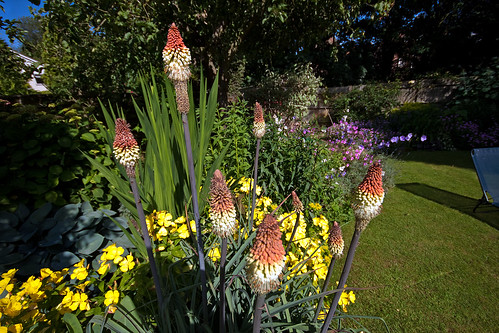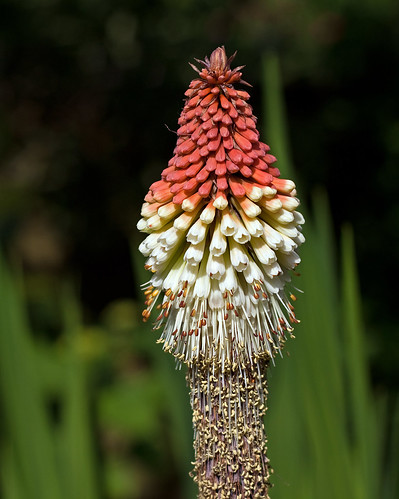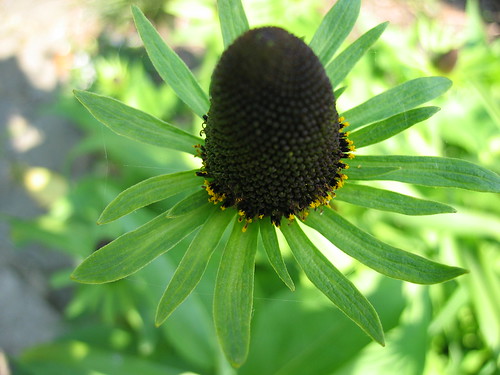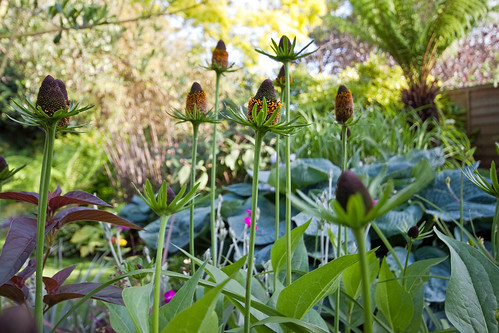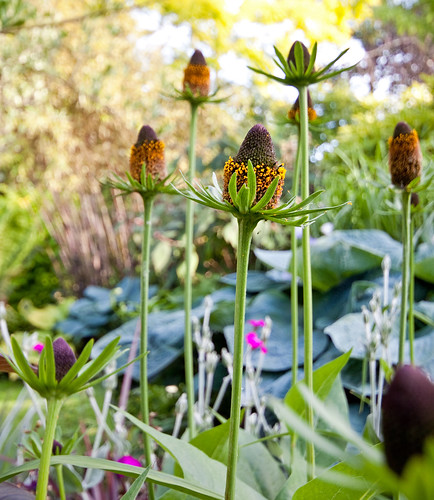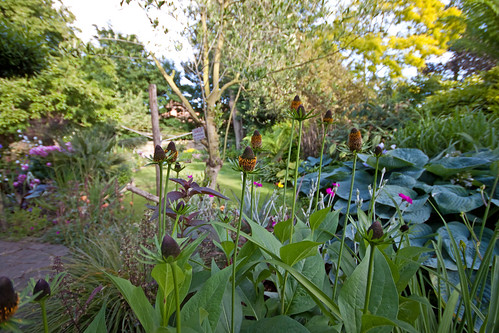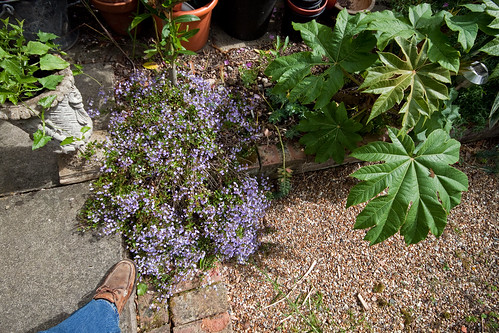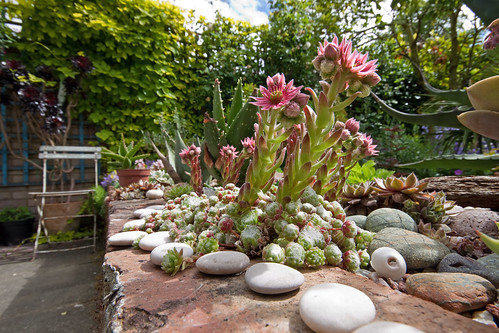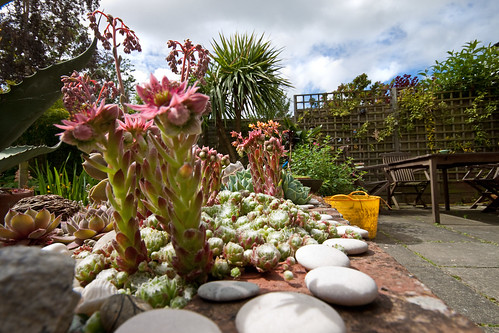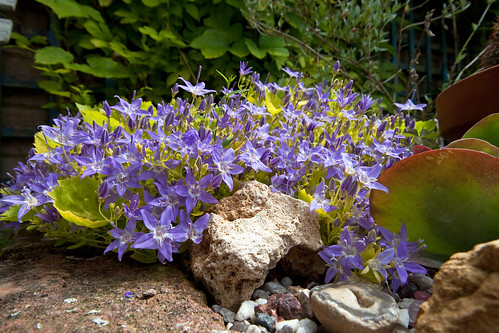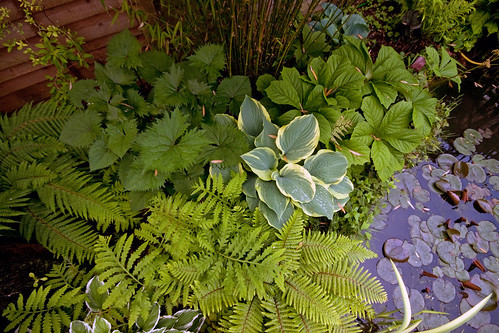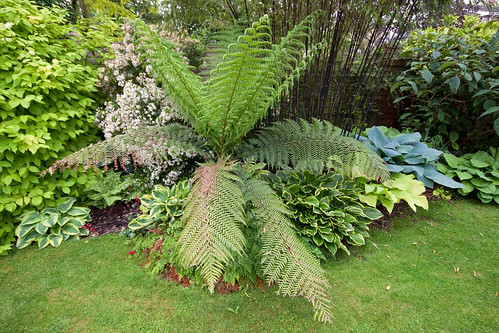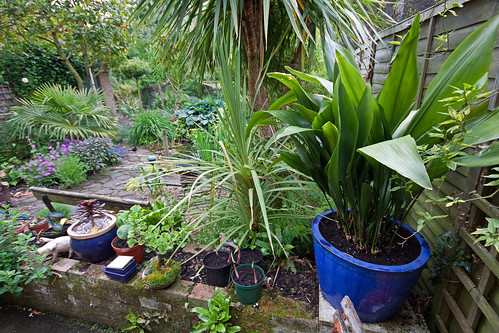This evening, I want to talk about the joys of having a pond.
I dug my pond about 10 years ago and added a water lily. Since then I have battled with this beast in an effort to control its desire to completely take-over the pond and probably the whole garden. On Sunday just gone, I undertook another round in the battle. You see, my pond is not exactly big but it is big enough to prevent me from reaching the depths at its centre where the beast of the water lily has its main headquarters. To overcome this problem I used a ladder (on full extension) and dropped this across the pond. Having laid a plank across its rungs I then crawled out to the centre of the pond and from there plucked out the excess growth of lily pads. Success! Although I will have to perform this task several more times this summer.
The photo below shows the pond this evening with clear water visible and lily flowers. (I must apologise here to all the readers of this blog who have lost their tree ferns due to the cold winter – as, in the shot you can see a rather healthy tree fern!)
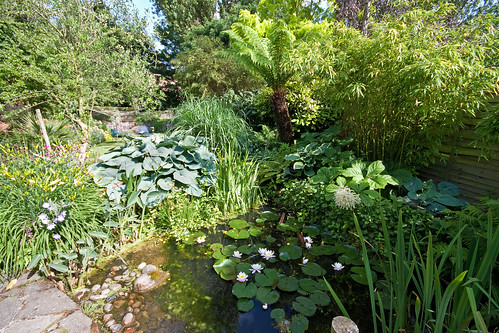
You might be asking why I didn’t just wade into the pond to attack the water lily? Well, the answer is simple – Wattle!
Wattle is a large goldfish that lives in the pond along with a breeding herd of minnows (one is called Kylie), lots of newts and various frogs. Wattle is the last survivor of a pair of goldfish given to me by my late father. Wattle’s partner – Daub – died a few years ago. I would not wish to upset Wattle by wadding in his pond. Below is a photo of Wattle taken a few days ago:
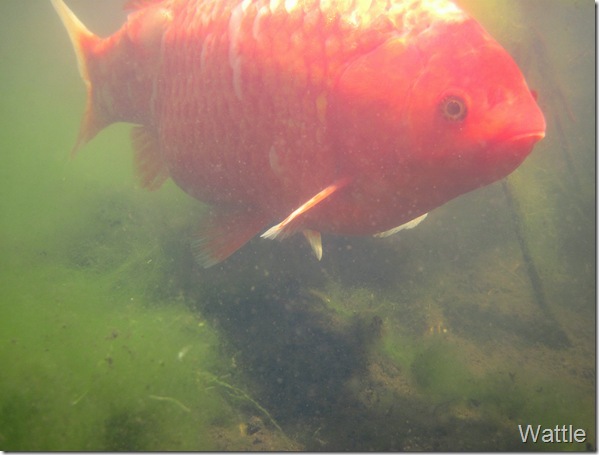
The photo above (taken underwater) probably shows the best side of Wattle. A couple of weeks ago he had a nasty brush with a Heron, at least, I think he did. I saw the Heron early one morning standing in the pond and a few days later I noticed that Wattle had bruising to his hind quarters and (dare I say it) a bit of mould! I have feared that Wattle might not be long for this pond but he seems more chirpy lately and I hope he is recovering. It is probably true to say that Wattle is my only true friend! He is a bit slow these days but he is old for a goldfish. I need to drop his food pellets close to his mouth because he is a bit adverse to swimming far. Mrs Musa things I fuss over Wattle too much! I think she is just jealous! An example of this occurred the other week in the pet shop:
I said to the Pet Shop man:
“A bag of your finest pond-fish food please”
“Certainly Sir. This is the best pond-fish food. . . . Koi Carp? He said
“Well . . . Carp” I said
Mrs Musa said to pet shop man: “It’s only a goldfish and he’s only got one!”
How embarrassing! She never misses a chance to ‘have a go’ at Wattle.
Such is my fondness for Wattle that last week, when I feared that he might die, I investigated the possibility of getting him stuffed. Do you know that specialist fish taxidermists charge £25 an inch to stuff a fish! I reckon that Wattle must be at least 10 inches long so that would mean at least £250! I wonder if anyone has ever had a goldfish stuffed before?
Managing a pond requires a certain amount of dedication. In the summer I have to net-off the fine threads of pondweed and/or use a stick to wind the weed onto. This is an almost daily task. Last year, I noticed that a dollop of this weed that I had accidentally dropped onto the paving stones had dried into an almost paper-like green substance. This gave me an idea and I invented ‘Pondlife Products TM’. As a prototype I gathered a good amount of pondweed, washed it, drained it, and not having the patience to wait for the sun to dry it, ironed it with the electric iron (don’t tell Mrs Musa). The result was almost cardboard-like not unlike beer mat material. So, using a sharp knife and template, I fashioned the stuff into a beer mat or coaster. I even produced a brochure to which I attached my prototype. The brochure extolled the eco-friendly, green credentials of ‘Pondlife Products TM’ and suggested that it could be used to fashion cardboard and paper products, brake linings etc. etc. I shall make some more samples and perhaps post a photo of them!
Ponds are always fascinating! Mine attracts frogs, newts, bathing birds, kingfishers, herons, dragonflies and all sorts of bugs.
